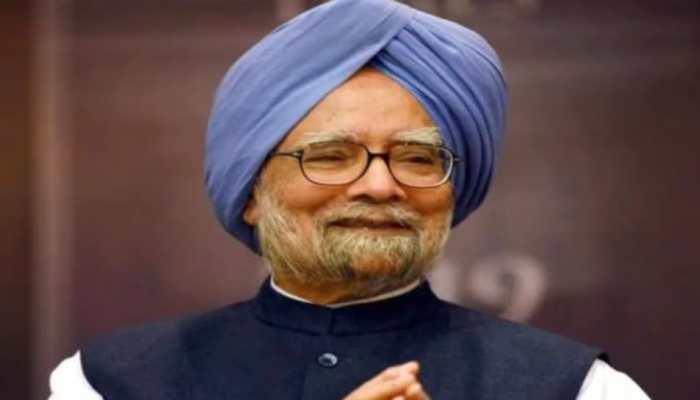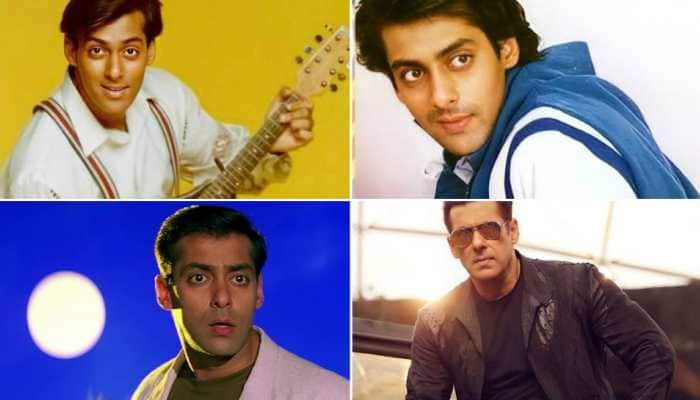Exclusive: My work is to inspire team, support new ideas and make them a reality, says ISRO Chairman Dr S Somanath
ISRO Chairman Dr S Somanath shared his vision for the ongoing tenure, his thoughts on Indian re-usable rocket projects, his expectations from Indian start-ups and conglomerates, the ambitious Gaganyaan Programme and its related International collaborations and much more.
- ISRO Chairman Dr S Somanath's top priories include opening up of India’s predominantly state-run space sector to private firms
- He shared his expectations from Indian start-ups, the ambitious Gaganyaan Programme and its related International collaborations and much more
Trending Photos
) Zee News Image
Zee News Image Chennai: Opening up of India’s predominantly state-run space sector to private firms, stakeholders and enabling it in true spirit are the top priories of Chairman, Indian Space Research Organization (ISRO), Dr S Somanath. In an exclusive conversation with Zee Media, the Chairman shared his vision for the ongoing tenure, his thoughts on Indian re-usable rocket projects, his expectations from Indian start-ups and conglomerates, the ambitious Gaganyaan Programme and its related International collaborations and much more.
According to Dr Somanath, the process of facilitating the opening up of India’s space sector is a long-drawn one. This comprises putting in place specific legislation, policies for the new entrants, offering them opportunities, while also minimizing their hurdles in their journey of entrepreneurship and innovation. “My role will be to set in motion the process now, so as to see results in a few years of time. These are - new industries coming up and launching rockets from India, satellites being built by private companies, applications being used to meet the global demand etc.
Queried about the Indian share of the USD440bn global space economy being less than 2 per cent and ISRO’s measures to improve it, he said, the important part was to address the needs of users in India in an economical manner. These users include the Government of India, strategic agencies and commercial users. Mentioning that rockets and satellites were only a small part of the global space economy, he emphasized earning revenue by providing space-based services and delivery of applications to users. While he did not wish to get into numbers, he affirmed that India’s target would be to expand its share.
On the Engineering goals of ISRO, in building advanced rockets, engines and more efficient satellites, he said that ISRO had to decide on future engines based on the future rockets that are being envisioned. “We are now trying to figure out the cost-effectiveness and design complexities of future engines of different classes and will be working on them in future. With current engines, there is a limit to which we can grow in launch vehicle(lift) capacity. Regarding satellites, he said that India had infrastructure (bus structures)for satellites weighing as less as 20-30kg to 5tons. However, he admitted the need to innovate and make satellites more compact, inculcate advanced electronics and add more functionality in the given space.
“Winged re-usable rocket still has some merit and provides certain operational flexibility, we continue to work o winged reusable rockets and we have an ongoing programme to work on the orbital re-usable vehicle. We have not started working towards making current expendable rockets into re-usable rockets, we have to initiate that programme and it will be linked with engines we need to develop” he replied when asked to elaborate on India’s efforts towards re-usable rockets and new-age methods of launching from jumbo jets etc.
Dr Somanath feels that Indian private companies(start-ups and established giants) need to play a larger role by involving themselves in space applications, building and launching spacecraft and rockets etc. The veteran rocket scientist also sees great promise in 10 Indian space start-ups, that are operating in different domains. “It is very high, they are enthused and active in working on it… It is not easy.. a lot of knowledge is required… Share of knowledge from ISRO is necessary for them to succeed.. I am Looking forward to seeing them succeed, with their own initiative and with support of skilled people created by the space programme” he said when asked about the prospects of Indian space start-ups launching their own rockets in the next two years.
Regarding ISRO’s initiatives to remain competitive in a global market where launch cost(per kg to orbit) was drastically falling, he said, it was about making the systems simpler, using more commercial items to make manufacturing processes easy, conceiving re-usability to use rockets like planes etc. “In ISRO we are already working on winged rocket, vertical take-off and landing is the next step, for which, we need a (throttling)capable engine.. In the absence of that engine, we will start a tech demonstration programme and actual rocket development” he explained about the future.
He also agreed that ISRO’s upcoming Small Satellite Launch Vehicle(SSLV) was a step in the direction of bringing down launch costs and increasing accessibility to space. “We wanted a simple rocket that can be built and operated by industry, without much complexity. Hence, SSLV is significantly simpler than the current rocket fleet(PSLV, GSLV) and it can be manufactured by smaller industries, as it uses simpler systems and commercially available materials. So, it can be transferred 100percent to industry and it will be cost-efficient” he added.
Asked to elaborate on the Human-rating of GSLV Mk3 rocket for India’s Gaganyaan(Human Spaceflight mission, the Former Director of Vikram Sarabhai Space Center explained that the GSLV Mk3 rocket was already capable of being human-rated, whereas the same cannot be done for every rocket. Simply put, the human rating is the process of transforming a rocket meant for carrying cargo into one that can reliably carry astronauts. “Minimizing acceleration, sound level, shock, these are already into the rocket. Further, we need to ruggedize marginalities, possibilities of failure anywhere in design are corrected, the entire rocket manufacturing process is being made more quality sensitive, we do a large number of tests to prove if any higher level of confidence is to be built” he said.
On the failsafe measures being engineered, he added that there were in-built measures and intelligence to detect anomalies. “If one system fails, the next should take over, and if the second fails, the third must take over… and still continue the mission or abort. In the human-rated rocket, most critical systems are going to be quadruple redundant.. there are going to be four systems, so that, in no way will there be a possibility of a major catastrophe” he explained.
As India’s most ambitious spacefaring mission, Gaganyaan is a leading example of India’s collaboration with agencies from all major spacefaring nations. Sharing his views on the same, Dr. Somanath said that it involved procurement, technology transfer and working together with different nations. “In rocket design, we are seeking the support of various countries. I am directly dealing with various facilities across the globe for wind tunnel testing, which we need to characterize the vehicle and crew module. Human spaceflight requires much more sharing of knowledge, there are experts across nations who can really help us. We will continue to seek support from US, Russians, Japanese, Europeans etc. We also need global support for tracking, rescue, communications, and even emergencies” he stated.
While all foreign space agencies are ready and happy to help in various aspects, there are also critical systems, technologies that will not be shared or offered for purchase. These include environmental control and life support systems, crew module, landing parachute systems, propulsion etc. However, space suits and seats can be procured from international agencies. Indian astronauts are also undergoing training in established foreign facilities.
As Chairman, he also extolled ISRO as an organization for the strong team and centre-level leadership that is in place. He sees this tenure as an opportunity to inspire his team and make their vision a reality, by creating a support system. He expressed confidence that team ISRO would come up with greater ideas, whereas, he as Chairman would figure out the national and futuristic importance of the ideas and seek Government support to implement them. With the support of the people of India and all stakeholders of the space programme, he firmly believes it will become a reality.
“My work is centred around rockets, but I’m interested in everything in space - from rockets to satellites to space science and mechanical engineering… I am passionate and I will learn as much as I have learnt so far and even more…” Dr S. Somanath signs off with a confident smile, as we wish him and ISRO all success - on Earth, in orbit and beyond!
Stay informed on all the latest news, real-time breaking news updates, and follow all the important headlines in india news and world News on Zee News.
Live Tv







)
)
)
)
)
)
)
)
)
)
